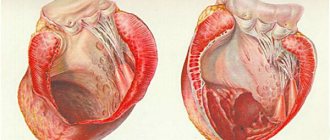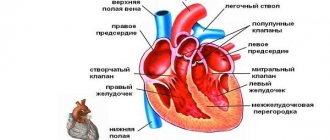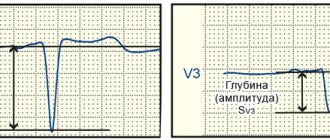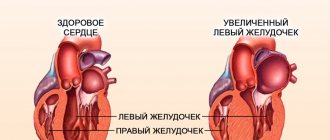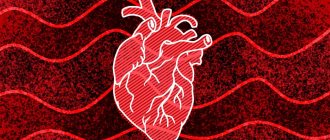What is coronary artery stenting?
More than 2 million stents are implanted annually. And this is understandable, because stents are used to treat one of the most common diseases - coronary heart disease.
Coronary angioplasty and stenting is an intravascular treatment for coronary heart disease. The basis of coronary heart disease is the narrowing of the blood vessels that supply the heart (coronary arteries) by cholesterol plaques. Stenting allows narrowed arteries to widen. To do this, a special balloon is placed inside the artery and inflated, thus “flattening” the cholesterol plaque and restoring blood flow through the artery. After this, a metal frame—a stent—is implanted into the narrowing site to “fix” the result. In this case, there is no need to open the chest and all manipulations are carried out through a small puncture in the artery in the arm or groin.
Arterial occlusion
When arteries are occluded, acute vascular insufficiency develops, which is life-threatening and threatens severe complications and disability. In this case, the internal organs that feed these arteries are predominantly affected.
Against the background of oxygen starvation, areas of necrosis develop in these organs, which may require surgical removal. If blood circulation is not restored in a short time, there is a risk of severe complications and even death due to extensive disturbances in the functioning of the organ.
Who is indicated for cardiac stenting?
Stenting of cardiac vessels is indicated for patients with severe angina pectoris, after myocardial infarction and pre-infarction conditions, patients with proven ischemia (lack of blood to the heart) based on the results of stress tests. In this case, the decision on stenting is made only based on the results of coronary angiography - a contrast study of the heart vessels. Coronary angiography, like stenting, is performed in the cath lab. Often coronary angiography “transitions” into vascular stenting because performed through the same puncture in the artery.
Treatment
It is necessary to relieve pain and spasm. To do this, you should give an anesthetic. It’s good if it is possible to inject papaverine. If a person has heart medication with him, it must be given in the correct dose.
After rendering assistance by emergency medical specialists, the victim is taken to the hospital. There the patient is examined. An ECG is available in any medical institution. When it is deciphered, the depth and height of the teeth, the deviation of the isoline and other signs are taken into account.
An ultrasound of the heart and blood vessels and arteries is also performed. This study helps to identify the consequences of occlusion and blood flow disturbances. It is useful to perform coronary angiography of the heart vessels with the introduction of a contrast agent.
Treatment of acute manifestations of occlusions is a complex matter. Its success depends on the timely detection of the first signs of damage to the coronary arteries. Basically, it is necessary to resort to surgical intervention in order to clean the internal cavities of the arteries and remove the affected areas. Arterial bypass is performed.
In order not to bring the body to this, it is necessary to maintain the cardiovascular system in normal condition. To do this, a number of preventive measures should be taken:
- You need to monitor your blood pressure levels. It is best to be smart about drinking strong tea, coffee, salty and spicy foods.
- It's important to eat right. This means that you need to reduce your intake of fatty foods that contain a lot of cholesterol. After forty years, it is necessary to take cholesterol tests at least once every six months. Every day you should eat natural foods that contain a lot of vitamins and essential microelements.
- You need to get rid of excess weight, as it puts a serious strain on the heart and blood vessels.
- You should give up bad habits. This applies to smoking and alcoholic beverages. In medical practice, there have been cases when sharp spasmodic occlusion occurred, which was caused by alcohol or nicotine.
- Stress and mental turmoil must be avoided.
Thanks to such simple measures, you can protect yourself from dangerous consequences. It is important to understand that occlusion poses a real threat to human health and life. We need to prevent it or provide first aid!
What alternative methods to stenting exist?
- Drug therapy. You need to understand that it is tablets, and not stents, that primarily reduce the risk of myocardial infarction and determine the prognosis in patients with coronary artery disease. Therefore, in many patients with controlled angina pectoris, in the absence of objective evidence of severe myocardial ischemia (lack of blood), coronary stenting can be abandoned, despite significant narrowing in the coronary arteries.
- Coronary bypass surgery. Abdominal surgery, which is often performed using a heart-lung machine. During bypass surgery, bypasses (shunts) are constructed from the patient’s arteries and veins, allowing blood to be supplied to the heart, bypassing areas of the arteries affected by cholesterol plaques.
Symptoms of vascular blockage
Clinical manifestations depend on the degree and speed of artery occlusion. An acute cessation of blood circulation can lead to a sudden stop of contractions. The patient loses consciousness, breathing stops, the pulse ceases to be detected in the carotid and femoral arteries, heart sounds weaken and cannot be heard, and there is no reaction of the pupils to light. The patients' skin takes on an earthy-pale color.
With chronic, gradual narrowing of the lumen, myocardial ischemia occurs. It has periods of satisfactory well-being and exacerbation - attacks of angina pectoris.
Deterioration of the condition occurs in situations where increased blood flow is required, and a blocked vessel cannot meet the increased nutritional needs of the heart. This is how angina pectoris develops. In patients with physical activity or stress, the following are noted:
- pain behind the sternum, it moves to the arm, under the shoulder blade;
- feeling of pressure in the heart area;
- labored breathing;
- cardiopalmus;
- interruptions in rhythm;
- general weakness;
- fainting;
- sweating
Progressive blockage leads to a decrease in exercise tolerance, heart pain occurs during normal activity, then at rest.
A prolonged painful attack of angina may indicate the onset of a myocardial infarction. The pain becomes intense, stabbing, accompanied by a feeling of fear, difficulty breathing, severe weakness, cold sweat, cyanosis of the fingers and lips.
Painless and other atypical variants of the disease (with arrhythmia, shock, suffocation, edema, abdominal pain), low-symptomatic, are also possible.
With the gradual progression of the disease, ischemia provokes the formation of collateral (bypass) blood supply pathways in the heart muscle. With this option, there may be no acute forms of myocardial nutritional disturbances, since the cells receive oxygen and energy to function. New vessels have a smaller diameter and length than the main ones, so the muscle fibers gradually weaken, which is manifested by insufficiency of the heart.
Often, ischemic disease in such patients is detected at the stage of circulatory disorders - edema, rapid heartbeat, arrhythmia, severe shortness of breath with attacks of suffocation, which worsens in a supine position.
In the video about the causes and treatment of vascular blockage:
How to choose between stenting, bypass surgery and drug therapy?
This is the task of your cardiologist, who takes into account the following data:
- The severity of symptoms, namely: the severity of angina pectoris, the severity of shortness of breath, in other words, how much ischemic disease “interferes with the life” of the patient.
- Objective evidence of myocardial ischemia (lack of blood). Most often this is a stress test, ideally stress echocardiography, which should be performed by qualified doctors in a center with a large number of such studies.
- Coronary angiography data. With widespread severe damage to all three coronary arteries, the results of bypass surgery are better.
- Accompanying illnesses. If a patient has diabetes mellitus and multivessel disease of the heart arteries, for example, coronary bypass surgery is usually indicated.
Diagnosis of coronary stenoses
Arterial examination can be done in several ways. Moreover, one does not exclude, but complements the other:
- clinical picture (patient complaints, anamnesis - who was sick in the family, when the pain began, etc.);
- ischemic changes on the ECG;
- Diagnostics of the coronary arteries has the “gold” standard - coronary angiography. This is a study of the arteries of the heart with a contrast agent under x-ray control.
We recommend studying the article on a similar topic “Basic functions of the pulmonary artery” as part of this material.
Stenoses visible on coronary angiography
Technique for stenting coronary arteries (with professional jargon)
“We install the introducer”
To get to the heart vessels, the doctor needs to get into the patient’s arterial system. For this purpose, one of the peripheral arteries is used - the femoral (in the groin) or the radial (on the forearm). Under local anesthesia, a puncture is made in the artery and an introducer is installed - a special tube, which is the “entry gate” for all the necessary instruments.
"Let's put a guide"
Then a special thin-walled tube about a meter long - a guiding catheter (“guide”) is passed through the patient’s arteries and stops, slightly short of the heart, in the aorta. It is from the aorta that the coronary arteries that supply the heart depart. The tips of the catheters are curved in such a way that it is convenient for the doctor to enter one of the coronary arteries, right or left. By controlling the catheter, the doctor “enters” one of the coronary arteries. Half the job is done.
“Starting a conductor”
But how to get to the point of maximum narrowing in the artery? To do this, we need a “rail” along which all our tools will “ride”. This rail is the coronary guidewire - a thin (0.014 inch = 0.35 mm) metal “lint” with a soft tip (so as not to “scratch” the artery during the operation). Sometimes it is quite difficult to place a guidewire behind the site of narrowing; the tortuosity of the artery, the angle of departure of the branches of the artery, or pronounced narrowing due to the presence of plaques interfere. You can take a “harder” or “slipperier” conductor. Well, or just a favorite, because every doctor has his own preferences. One way or another, the guide ends up behind the site of narrowing on the periphery of the artery that we want to stent.
"Ballooning"
The first instrument that gets to the site of narrowing of the artery is a coronary balloon with a diameter most often from 1 to 3.5 mm and a length of 10-20 mm. The balloon is put on the conductor and moves along it to the point of maximum narrowing where it inflates. The pressure inside the cylinder reaches 15-20 A
Next, along the conductor, to the place that was narrowed before the balloon was inflated, the same balloon is inserted, on the surface of which a stent is fixed in a folded state. The balloon is inflated, the stent is expanded and “pressed” into the artery wall. The stent does not always expand perfectly and then the final stage of the procedure is needed - postdilatation (in simple terms - re-inflation).
"Let's blow it out"
A rigid balloon is placed inside the implanted stent and inflated with high pressure (up to 25 atmospheres). Most often, after this, the stent straightens and adheres well to the walls of the artery.
Vascular obstruction (Vascular occlusion)
Vascular occlusion is a violation of the patency of blood vessels, which is due to the fact that their lumen is stably closed in any area. The disease can occur in the lower or upper extremities, as well as in the retina and brain. If timely treatment is not carried out in the case of the acute stage of the disease, it may become irreversible.
A number of symptoms can serve as a sign that the disease has manifested itself. The main symptom when the disease occurs in the extremities (lower or upper) is the absence of pulsation of the arteries that are located further from the center of the body in relation to the location of the potential problem.
After this, the limb begins to turn pale, then a marble pattern appears on it. The skin becomes cold to the touch. Sometimes ischemic signs occur, for example, brittle nails, dry and noticeable wrinkling of the skin, lack of hair on it, and so on.
Sensitivity may be impaired, tactile sensations are reduced, tingling sensations are felt on the skin, overall muscle strength decreases, and in extreme cases, immobility of the affected limb may occur. If surgical treatment is not carried out (and in the case of an acute form of the disease, treatment should be as prompt as possible), then gangrene of the limb cannot be avoided.
In general, it is generally accepted that to suspect this disease, it is necessary to have at least one of five signs (especially when occlusion manifests itself in the lower extremities):
- pain;
- lack of pulse;
- pallor;
- decreased tactile sensitivity;
- paralysis.
All of these symptoms in English begin with the letter “p,” so you may see the disease under an alternative name: the five P complex.
Classification
Occlusion that occurs in vessels can be classified according to various criteria. First of all, it varies according to the type of its localization and the type of vessels affected.
Based on the type of vessels affected, the following are distinguished:
According to localization, occlusion occurs:
- affecting nutritional organs;
- affecting the set of great vessels;
- affecting the central nervous system;
- affecting some of the limbs (lower or upper).
Most often, in approximately fifty percent of all cases, occlusion occurs in the lower extremities. Damage to the vessels of the central nervous system and the vessels of the head section, that is, supplying blood to the head, occurs much less often.
The internal carotid artery is most often affected. Then a lack of nutrition of the brain and central nervous system cells develops. As a result, a serious pathology may arise, which will lead to a cerebral infarction - an ischemic stroke, so that after this a significant part of the activity of the body's systems may be disrupted - all this can lead to dementia and paralysis.
This disease can also occur in the vertebral artery, which affects the occipital part of the brain.
In this case, if treatment is not carried out, damage to part of the brain can lead to paralysis, dizziness, problems with vision, speech, and fainting.
Unlike the manifestation of this disease in the lower extremities and brain, occlusion of the vessels that supply the retina can begin suddenly and painlessly, but ultimately leads to almost complete loss of vision in the eye that was affected. This problem usually occurs in men after fifty years of age - and it requires surgical treatment.
Causes
There are a number of reasons that may result in vascular occlusion in the lower extremities, brain and other places.
There are several main ones:
Embolism. This name hides the blockage of a vessel by a dense formation located in the bloodstream. In turn, embolism can have various causes, most often infectious.
There are several subspecies of it:
- air embolism – entry of an air bubble into the vessels, which can occur due to lung injury or an incorrect injection;
- arterial embolism - blockage of blood vessels with the help of mobile blood clots that are formed due to pathology in the valve apparatus of the heart - usually occlusion in the lower extremities, vessels of the heart and brain (brain) occur precisely for this reason;
- fat embolism - occurs due to metabolic disorders, but sometimes can also occur as a result of injury - consists of the accumulation of tiny particles of fat in the blood into a larger fat clot.
Thrombosis. This is a process in which the lumen of the arteries regularly decreases, as the number and size of blood clots on the inner walls constantly increases.
The cause may be vascular atherosclerosis, but injuries and infections can also trigger this problem. Not only can occlusion occur due to thrombosis, but it also creates conditions for the development of embolism, which also increases the risk of the described disease. Aneurysm.
This vascular problem can similarly cause occlusion to occur. This is an anomaly, which is expressed in a sharp expansion or protrusion of part of the walls of blood vessels. It can be either congenital or acquired. Potential consequences include the embolism and thrombosis described above.
Injuries. Finally, occlusion can occur when bone or muscle tissue is damaged, resulting in compression of large blood vessels, making normal blood flow much more difficult.
Where the artery is pinched, thrombotic processes can begin, as well as embolism - so treatment after injuries must be started promptly, regardless of whether the injuries are to the lower extremities, brain or anything else.
Diagnostics
To diagnose the disease, it is necessary to carry out a number of examinations, which include palpation of the pulse in problem areas, functional tests, laboratory blood tests, duplex scanning, CT arteriography, MR angiography.
It is necessary to try to carry out a diagnosis at the first manifestations of signs of the disease, because it (in its acute form) develops quickly, and therefore can lead to amputation of the lower or upper extremities, and in a situation where the problem has arisen in the brain or manifested itself in the retina, further action must be taken more quickly, because the possibility of surgical intervention, in the case of the same brain, is minimal.
Treatment
If signs of the described disease are detected, it is necessary to undergo urgent hospitalization and consultation with a doctor specializing in blood vessels. It all depends on what stage of ischemia began to develop due to this disease:
- Tension ischemia and grade IA. At this early stage, it is sufficient to carry out conservative treatment. Thrombolics, fibrinolytic agents, antiplatelet agents and antispasmodics are administered intravenously. Various physiotherapeutic treatments are carried out, including barotherapy, magnetic therapy, and diadynamic therapy.
- Ischemia IB-IIB degree. In this case, you cannot do without emergency intervention, which should help quickly restore blood flow. Bypass surgery, thrombectomy or embolectomy is performed. If the occlusion is not extensive, then prosthetics of a segment of the artery can be performed.
- Ischemia IIIA-IIIB degrees. Emergency thrombectomy or embolectomy, as well as bypass surgery, are performed, but in addition to them, treatment such as fascitotomy is mandatory. Low-level amputation is possible.
- Ischemia IIIB degree. Vascular operations in this case are strictly contraindicated, because they can lead to post-ischemic syndrome and potential death. At this stage, amputation of the affected upper or lower limbs is mandatory.
To prevent recurrence of the problem, treatment continues for some time after surgery, namely anticoagulant therapy.
Hemostasis
What to do with a hole in an artery?
If the intervention was carried out through the radial artery (on the arm), a special bracelet with a cushion (hemostatic cuff) is put on the wrist, which will put pressure on the injection site and prevent bleeding. Depending on the situation, the cuff will remain on the arm from 3 to 12 hours.
In case of femoral access, there are 2 main options:
- Manual (manual) hemostasis. After the introducer is removed, the doctor presses with his hands on the injection site for 15 minutes. Then apply a pressure bandage for 6-8 hours. The patient should lie on his back with his leg straight.
- Closure devices are special “plugs” that allow you to close the artery from the inside. In this case, there is no need to put pressure on the leg and a pressure bandage is not needed. A special patch is applied to the injection site and several hours of bed rest are recommended.
Stenting is completed.
Stages of formation of the chronic form
An atherosclerotic plaque on the artery wall can open - the dense capsule ruptures, and blood clots (thrombi) form in both directions from it. From this moment the process of chronic blockage of the arteries of the heart begins. In the future, its course occurs in accordance with the stages:
| Stage | What is it characterized by? |
| First | Lasts up to 12 - 15 days. In response to the rupture of an unstable cholesterol plaque, inflammation develops - leukocytes accumulate and biologically active substances are released. To restore the integrity of the vessel, platelets migrate into the lesion and fibrin fibers enter. A fresh blood clot begins to grow into tubules. |
| Second | Intermediate stage, its duration does not exceed 3 months. The lumen of the artery gradually narrows, and after 70% of the artery is blocked, pain in the heart appears. The thrombus continues to form, its surface is covered with a dense fibrous capsule. |
| Third | Stage – mature plaque. Its lumen is filled with coarse connective tissue, the tubules gradually disappear, after 2 years the structure of this formation practically does not change. |
This is how a stable plaque grows, which leads to gradual occlusion of the coronary artery. But the probability of destruction at stages 1 and 2 remains high. In this case, the torn fragments with the blood flow clog the branches of the arteries with the development of myocardial infarction.
Prevention
If you adhere to the following rules, you can significantly reduce the risk of disease:
- lead a healthy lifestyle;
- do yoga, light gymnastics;
- to refuse from bad habits;
- eat healthy and quality food;
- monitor body weight;
- avoid stress;
- treat chronic diseases.
At the first symptoms, you must consult a doctor and undergo appropriate therapeutic procedures. For prevention purposes, you need to take vitamin complexes, adhere to a diet, and do not abuse fatty and fried foods. Eat more vegetables and fruits, as well as foods containing folic acid.
